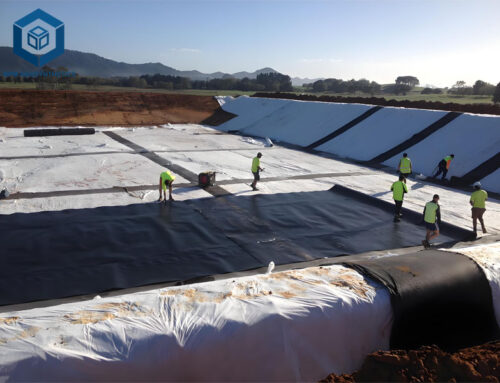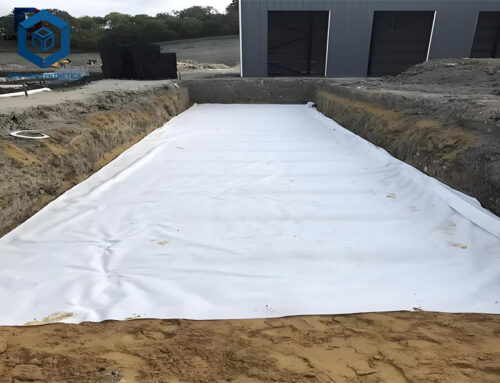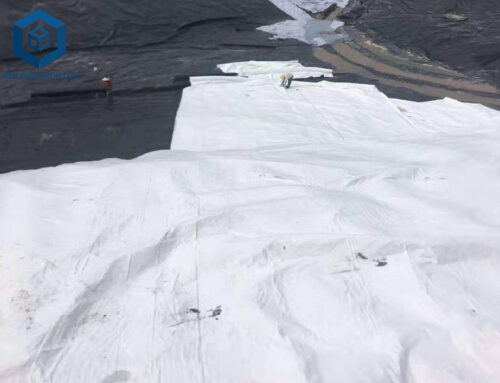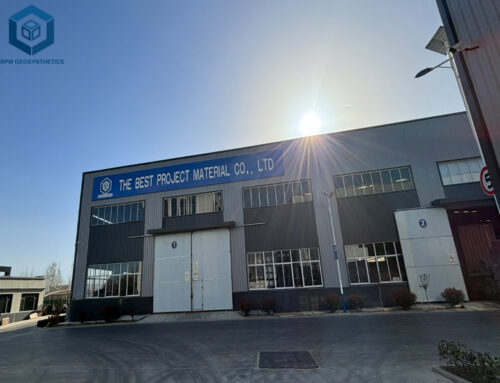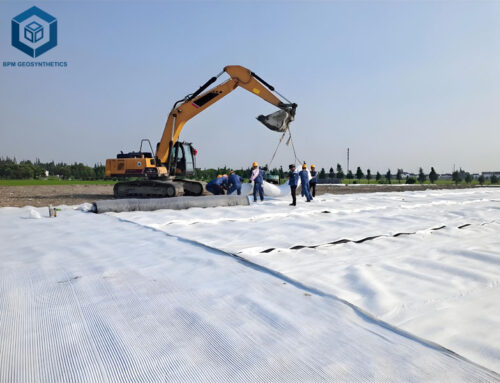Non woven needle punched geotextile, also known as needle punched geotextile fabric or needle punched geotextile, is designed and engineered to provide characteristics such as tear resistance, durability, drainage capabilities, and particle retention for various geotechnical needs, and the choice between long-filament and short fiber options depends on specific project requirements.
As the professional geotextile manufacturer ans supplier, BPM Geosynthetics offers high quality geotextile fabric at best factory price. In this blog, let us delve into what is non woven needle punched geotextile and how to choose it.
1. What Is Non Woven Needle Punched Geotextile?
Manufacturers produce nonwoven needle-punched geotextile by intertwining polypropylene fibers. This process ensures resistance to UV deterioration and prevents reactions with soil chemicals.
In the production, manufacturers arrange fibers into a mesh using techniques such as acupuncture. Consequently, this results in a fabric that is soft, thick, and rigid.
These geotextiles exhibit tear resistance, durability, and adaptability to deformation. Moreover, they provide efficient drainage and prevent soil particle loss.
Needle-punched geotextiles are available in both long-filament and short-fiber types. Both variants excel in functions such as filtering, isolation, reinforcement, and protection.
Their tensile strength varies, allowing for selection based on specific project requirements.
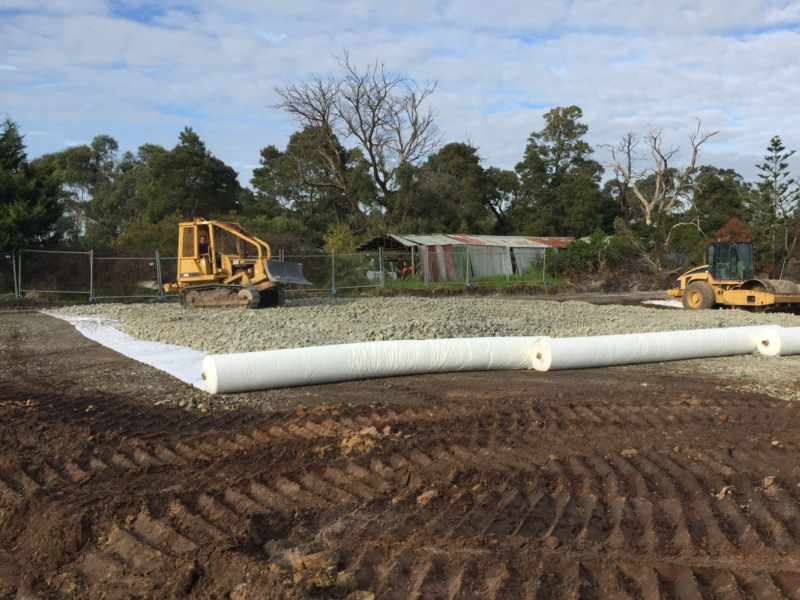
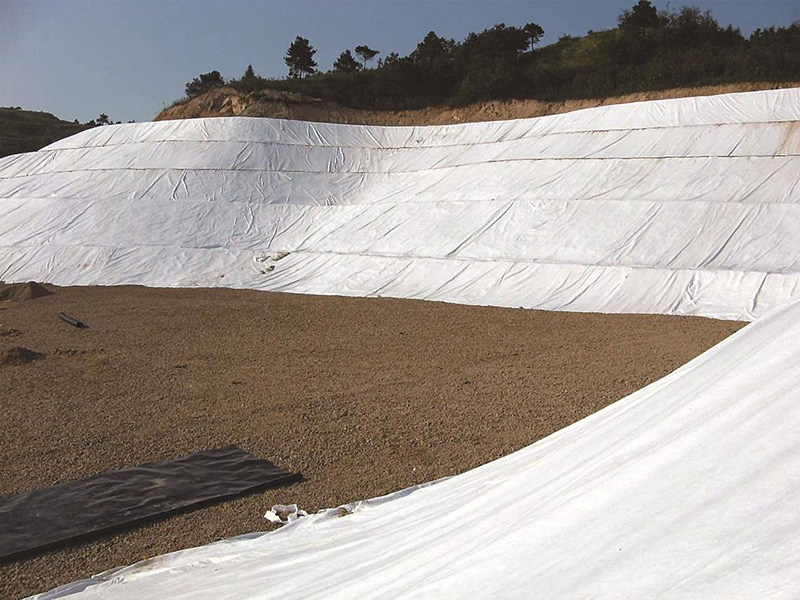
2. What Is The Difference Between Staple Fiber And Filament Needle Punched Geotextile?
Staple fiber and filament nonwoven needle punched geotextiles differ in materials and process. Let’s explore each type.
2.1 Polyester staple fiber geotextile
Polyester staple fiber geotextile is made from polyester staple fibers through non-woven processes like needle punching. It offers flexibility, corrosion resistance, water permeability, and filtration. Used where these properties are needed.
Polypropylene short fiber geotextile is made from high-strength polypropylene short fibers using non-woven technology. It has isolation, reinforcement, protection, filtration, drainage, and buffering properties. Outperforms polyester geotextiles in physical and mechanical performance.
2.2 Filament nonwoven geotextil
Manufacturers produce filament nonwoven geotextile by melt spinning and needle punching PET, resulting in a three-dimensional pore structure. This structure boasts high mechanical indices and excellent creep performance. Additionally, it resists corrosion, aging, and heat while exhibiting superior hydraulic properties.
Polyester filament geotextile is created directly from polyester through spinning and needle punching processes. It finds extensive use in geotechnical and civil engineering applications. The meshed polyester filaments form a three-dimensional structure with robust mechanical properties, effective drainage, elongation, and chemical stability. Furthermore, it resists biodegradation, acids, alkalis, and aging. This geotextile offers high strength, puncture resistance, cost-effectiveness, and ease of use.
Staple fiber geotextile is produced using high-quality polyester short fibers or other fibers like polypropylene, nylon, vinylon, or mixed fibers, depending on requirements. This production involves needle-punched non-woven technology.
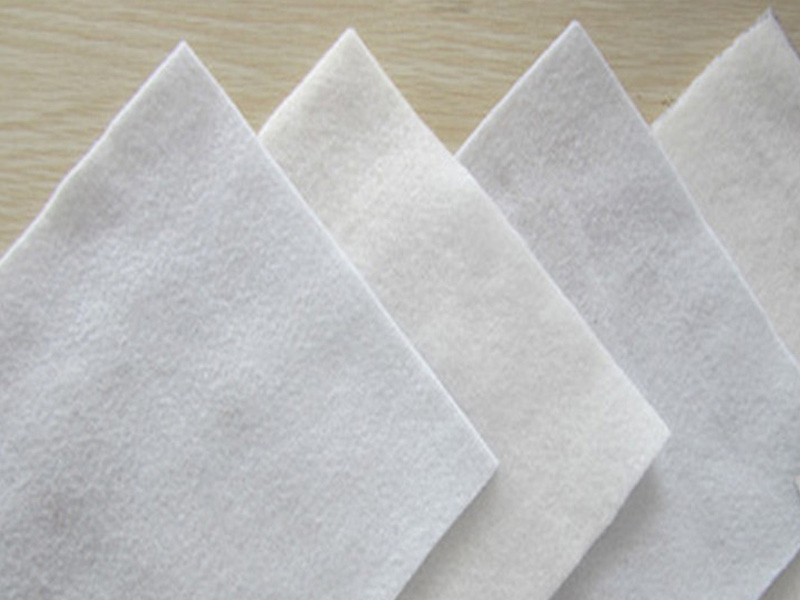
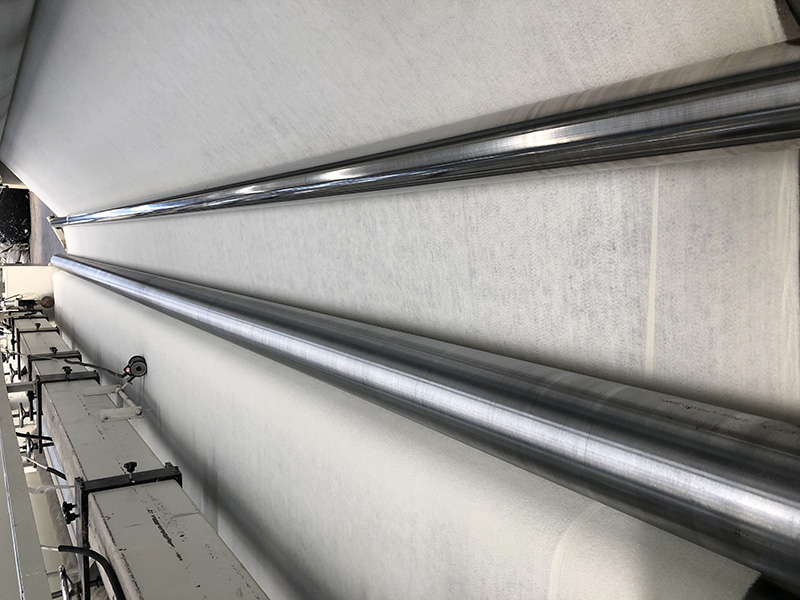
3. How To Choose Right Non Woven Needle Punched Geotextile?
In order to facilitate users to choose appropriate nonwoven needle punched geotextiles, the specifications and model parameters of nonwoven needle punched geotextiles will be introduced in detail below.
3.1 Specifications of non woven needle punched geotextiles
Needle punched geotextile specifications usually refer to its width and length. According to different engineering needs, the specifications of geotextiles will also vary. Generally speaking, the width of geotextile can range from 20cm to 6m, and the length can be customized according to project needs.
3.2 Material of non woven needle punched geotextiles
Non woven needle punched geotextiles are usually made of high-strength synthetic fibers such as polyester fiber, polypropylene, and nylon. Geotextiles of different materials have different characteristics and application ranges. For example, polyester fiber geotextile has high strength and durability and is suitable for heavy-duty transportation areas such as highways and railways; while polypropylene geotextile has good low-temperature resistance and durability and is suitable for cold areas and permanent applications. sexual engineering.
3.3 Parameters of nonwoven needle punched geotextiles
The parameters of geotextiles include mass per unit area, thickness, tensile strength, tear strength, bursting strength, peel strength, etc. These parameters will directly affect the performance and use of geotextiles.
3.31 Mass per unit area:
Refers to the mass of geotextile per square meter, usually expressed in g/m². The mass per unit area is one of the important factors affecting the strength of the geotextile. Generally speaking, the greater the mass per unit area, the higher the strength of the geotextile.
3.32 Thickness:
Refers to the thickness of geotextile, usually expressed in mm. The thickness will affect the water permeability and flexibility of the geotextile. Generally speaking, the smaller the thickness, the better the water permeability, but the flexibility will be reduced.
3.33 Tensile strength:
Refers to the maximum tensile force that the geotextile can withstand during the stretching process, usually expressed in MPa. Tensile strength is one of the important indicators to measure the strength of geotextile. Generally speaking, the higher the tensile strength, the better the durability of geotextile.
3.34 Tear strength:
Refers to the maximum tearing force that the geotextile can withstand when subjected to tearing force, usually expressed in KN. Tear strength directly affects the durability and protective effect of geotextile. Generally speaking, the higher the tear strength, the better the protective effect of geotextile.
3.35 Bursting strength:
Refers to the maximum pressure that the geotextile can withstand when subjected to pressure in the vertical direction, usually expressed in KN. The bursting strength directly affects the load-bearing capacity and durability of the geotextile. Generally speaking, the higher the bursting strength, the better the load-bearing capacity and durability of the geotextile.
3.36 Peel strength:
Refers to the maximum peel force that the geotextile can withstand when subjected to peel force, usually expressed in N/50mm. Peel strength directly affects the bonding effect and service life of the geotextile. Generally speaking, the higher the peel strength, the better the bonding effect and service life of the geotextile.
2.4 Selection of non woven needle punched geotextiles
When selecting needle punched geotextiles, comprehensive considerations need to be made based on different engineering needs and actual conditions. Here are some key points for choosing nonwoven needle punched geotextiles:
2.41 Select according to project needs:
Appropriate non woven needle punched geotextile types and specifications need to be selected according to different project needs and actual conditions. For example, in heavy-duty transportation fields such as highways and railways, polyester fiber non woven needle punched geotextiles with high strength and good durability need to be selected; while in cold areas and permanent projects, polypropylene with better low-temperature resistance and durability needs to be selected.
2.42 Comprehensive consideration
When selecting the non woven needle punched geotextile, it is necessary to comprehensively consider its parameter indicators, including mass per unit area, thickness, tensile strength, tear strength, bursting strength, peel strength, etc. These parameters will directly affect the performance and use effect of non woven needle punched geotextiles and need to be selected according to project needs.
2.43 Consider environmental factors:
When choosingnon woven needle punched geotextiles, you need to consider environmental factors and choose degradable and environmentally friendly geotextile materials. For example, you can choose to use non woven needle punched geotextiles made of biodegradable polylactic acid (PLA) fibers to reduce environmental pollution.
4. Summary
In summary, choosing a suitable non woven needle punched geotextile requires considering the comprehensive effect of multiple factors, including engineering requirements, material properties, environmental factors, etc. Only by comprehensively considering these factors and we can select the appropriate geotextile and achieve the best use effect and economic benefits.

